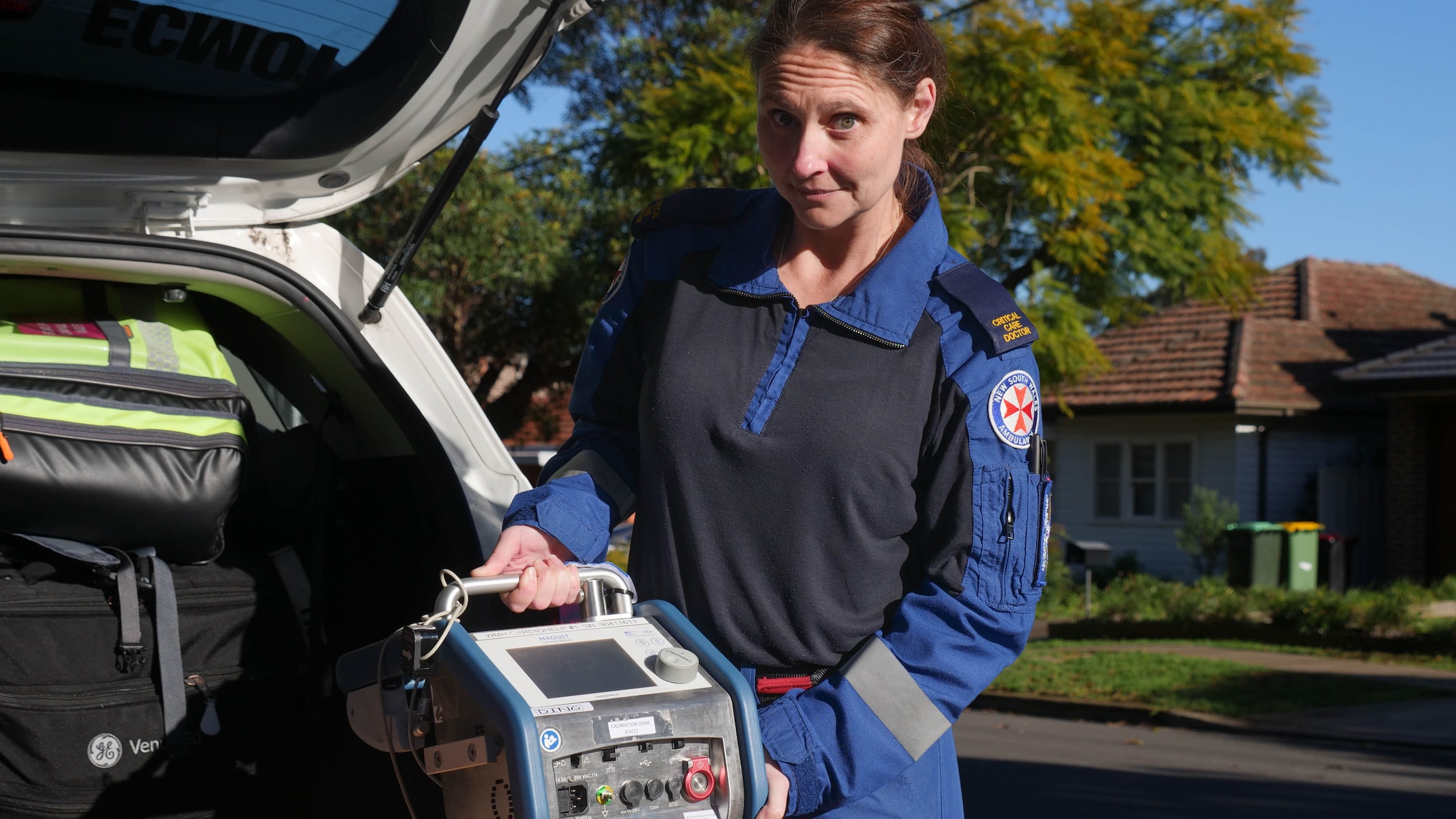
ECMO MACHINE THAT KEEPS CARDIAC ARREST PATIENTS ALIVE TRIALLED IN SYDNEY BY AMBULANCE NSW
All Todd Rivers remembers about his heart attack was feeling weak and having cold sweats while working at his warehouse job Sydney's south-west.
His colleagues put him in a chair and called triple-0 for an ambulance.
As the paramedics arrived Mr Rivers went into cardiac arrest. They gave him CPR and a specialist team put him on an on-trial machine before taking him to Westmead Hospital.
"I remember one of the [ambulance] officers coming to talk to me, but I was completely out of it," Mr Rivers said.
"Next thing I know I wake up and I'm in ICU at Westmead."
The 53-year-old's heart stopped for an hour, but that machine kept his brain and vital organs functional.
That machine is a pre-hospital ECMO — extracorporeal membrane oxygenation — which is currently being trialled by NSW Ambulance in Sydney.
Patients like Mr Rivers have cannulas put in their femoral artery and vein, their blood is given oxygen by the machine, and then the blood is pumped into the body.
NSW Ambulance ECMO specialist Natalie Kruit says this effectively "stops the clock" so the cause of the cardiac arrest can be fixed.
"His heart didn't restart for over 60 minutes, but his brain was being kept alive by this machine," Dr Kruit said.
"In those circumstances, patients normally die."
NSW Health said the machines can increase the survival rate of someone having a cardiac arrest from less than five per cent to around 30 per cent.
Mr Rivers is the first patient to be saved by the machine in the trial.
"I'm happy that this technology exists, otherwise I wouldn't be here," Mr Rivers said.
ECMO used in few places in the world
Dr Kruit said the ECMO is the biggest advancement in cardiac arrest management since the defibrillator.
The machines have existed since the 1970s but were only used in clinical settings like hospitals. Now they fit into the boot of a 4WD.
Sydney is just one of four places in the world using ECMO in ambulances, as part of the trial that begun in August last year.
Emergency physician Brian Burns told ABC Radio Sydney that patients were identified as candidates for the procedure by paramedics at the triple-0 control centre in Sydney.
He said picking the patient was based on the first couple of minutes of the triple-0 call when it was clear the patient was in cardiac arrest.
"The clearer the information, the faster we get activated," Dr Burns said.
NSW Ambulance has one ECMO unit riding in the back of an ambulance car based at Olympic Park.
Traffic modelling by the University of Sydney showed the unit could reach 90 per cent of Greater Sydney within 40 minutes if it was based at Homebush, Dr Kruit said.
"We want to get them on to this machine in under 60 minutes," Dr Kruit said.
"If we can get to the scene of the [cardiac] arrest by 40 minutes they have an improved chance of survival."
The machine rides with a specialised team, including a critical care paramedic and two specialist doctors specialised in either anaesthesia or emergency medicine.
There are 10 doctors and 6 critical care paramedics with NSW Ambulance that have been trained for the trial.
Dr Kruit said it was an expensive device but should be considered for its life-saving benefits and the additional benefits it has on cardiac arrest care.
She said approximately 100 patients per year in NSW could be eligible to be treated by a mobile ECMO.
"That's a lot of lives we can save with it," Dr Kruit said.
CPR still critical
Dr Kruit said patients going into cardiac arrest would still need early CPR for the technology to effectively save lives.
She said ordinary people need to be able to keep patients alive until paramedics arrive.
"This technology, amazing as it is, won't work unless people are able to do CPR properly," Dr Kruit said.
"People need to know how to do CPR."